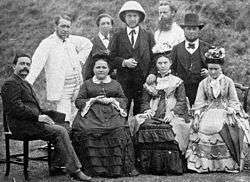Jean Abraham Chrétien Oudemans

Jean Abraham Chrétien Oudemans (Amsterdam, December 16, 1827 – Utrecht, December 14, 1906) was a Dutch astronomer. He was the director of the Utrecht Observatory from 1875 until 1898, when he retired.
Born in Amsterdam, as the son of the poet, teacher and philologist Anthonie Oudemans Sr., he entered Leiden University when he was just 16 as a student of the noted astronomer Frederik Kaiser. He became a high school teacher in Leiden when he was just 19 (1846). The next six years he worked on his dissertation on the determination of the latitude of Leiden. Next he studied asteroids and variable stars, meanwhile hoping for an academic appointment.[1] In 1855 he became member of the Royal Netherlands Academy of Arts and Sciences.[2]
He married Pauline Adriana Verdam (the daughter of a well-known mathematics professor) in 1856. In the same year he was appointed a professor at Utrecht University and became director of its observatory for the first time. However, his interest drew him towards geography. He traveled to the Dutch East Indies as head surveyor, and worked in that capacity for 18 years, publishing his works on the triangulation of the island of Java in six books.
In 1874 he observed the Venus transit from the island of Réunion, although in bad weather. In 1889 he published a star map.
Oudemans crater on Mars was named in his honor.
One of his sons was Anthonie Cornelis Oudemans Jzn, one of the fathers of cryptozoology.
References
- ↑ Pyenson, pp. 20-21
- ↑ "Jean Abraham Chrétien Oudemans (1827 - 1906)". Royal Netherlands Academy of Arts and Sciences. Retrieved 19 July 2015.
Sources
- Pyenson, L. (1989) Empire of Reason: Exact Sciences in Indonesia, 1840-1940, Brill, ISBN 90-04-08984-5, ISBN 978-90-04-08984-6, pp. 20–98
External links
Obituaries
- AN 173(1906) 271 (German)
- MNRAS 67(1907) 241